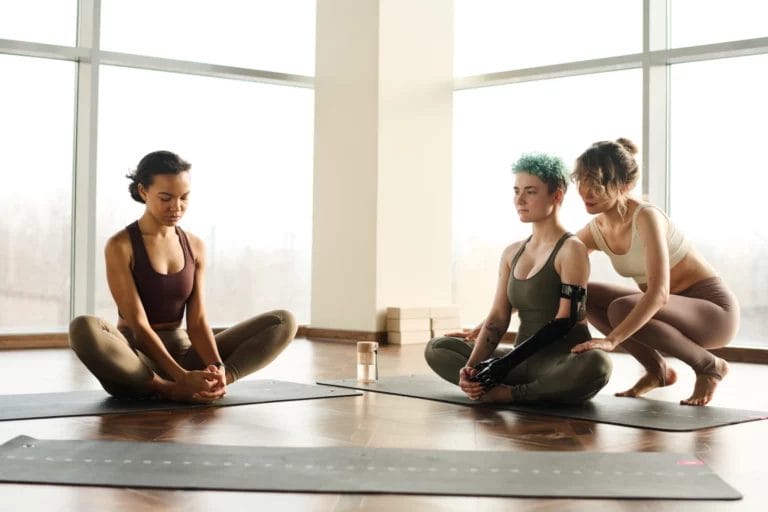- Last Updated:
- 10/23/2024
- Chelsea Ramsey
Becoming a certified yoga instructor is not a legal requirement to teach — but it is usually a requirement to get hired.
Getting certified shows you have a deep understanding of the practice, you know how to safely lead a class, and you’re dedicated to perfecting your teaching skills.
Learn how to become a certified yoga instructor with our step-by-step guide.
4 Steps to Become a Certified Yoga Instructor

1. Research Yoga Teacher Programs
The first step in any certification process is to spend time researching the different programs available. Consider your long and short-term goals, preferred yoga styles, time constraints, and overall availability to attend classes/training while conducting your initial research.
There are two primary types of yoga certifications:
- CYT – Certified Yoga Teacher
- RYT – Registered Yoga Teacher
A CYT is a more broad designation and it demonstrates that you have completed the training and hours required to teach.
RYT stands for Registered Yoga Teacher and is specific to Yoga Alliance — the widely recognized association of yoga professionals and practitioners who help set standards for teachers and schools around the world.
RYT and CYT certifications are essentially the same, except an RYT cert means the instructor is officially registered with Yoga Alliance.
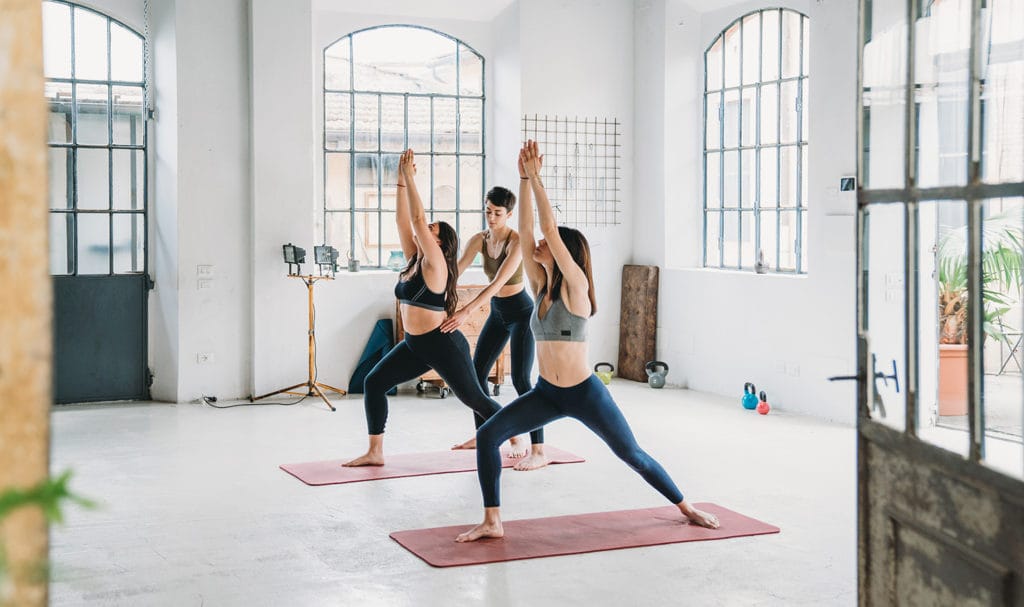
Certified Yoga Teacher (CYT)
CYT-200
The standard first level of yoga instructor certification is a 200-hour training program. This CYT-200 designation is the basic certification level required by most gyms and studios.
In those 200 hours you learn how to put together flows, basic anatomy, ethics and philosophy, how to safely run a class, avoid injuries, and more. These courses also include guidance from an established yoga instructor as your mentor/teacher.
Some CYT-200 programs focus on a specific type of yoga, like Hatha or Vinyasa, and some will be multi-style. Choosing between classes focused on one style or multiple is up to you!
CYT-300
The 300-hour course is typically designed to build upon the original 200-level programs. It delves further into the topics covered in the basic course and teaches more advanced asanas.
In most cases, you will have to complete the 200-hour course prior to registering for the 300. The good news is that in most cases the hours stack, meaning if you complete a 200-hour course and a 300-hour course, you can apply for a 500-hour certificate.
CYT-500
The 500-hour certification is the most advanced. To obtain a 500-hour credential you may take a 200 and a 300 course separately, or you may participate in a program that combines the two into one longer course. It usually depends on the individual instructor training program.
The programs that include all 500 hours of education as one package are typically intense, detailed courses designed for serious or advanced practitioners.

Registered Yoga Teacher (RYT)
If you complete a yoga teacher program through a school registered with Yoga Alliance (an RYS, or Registered Yoga School), you can also register yourself as a teacher with Yoga Alliance and become an RYT.
There are RYT-200, RYT-300, and RYT-500 classes that follow the same pattern of certification as the CYT programs outlined above.
In addition to the standard RYT programs, Yoga Alliance has created additional certifications for those with even more experience:
- E-RYT 200 – Experienced Registered Yoga Teacher 200 Hours: minimum of two years and 1,000 hours of teaching since completing initial certification
- E-RYT 500 – Experienced Registered Yoga Teacher 500 Hours: minimum of four years and 2,000 hours of teaching since completing initial certification
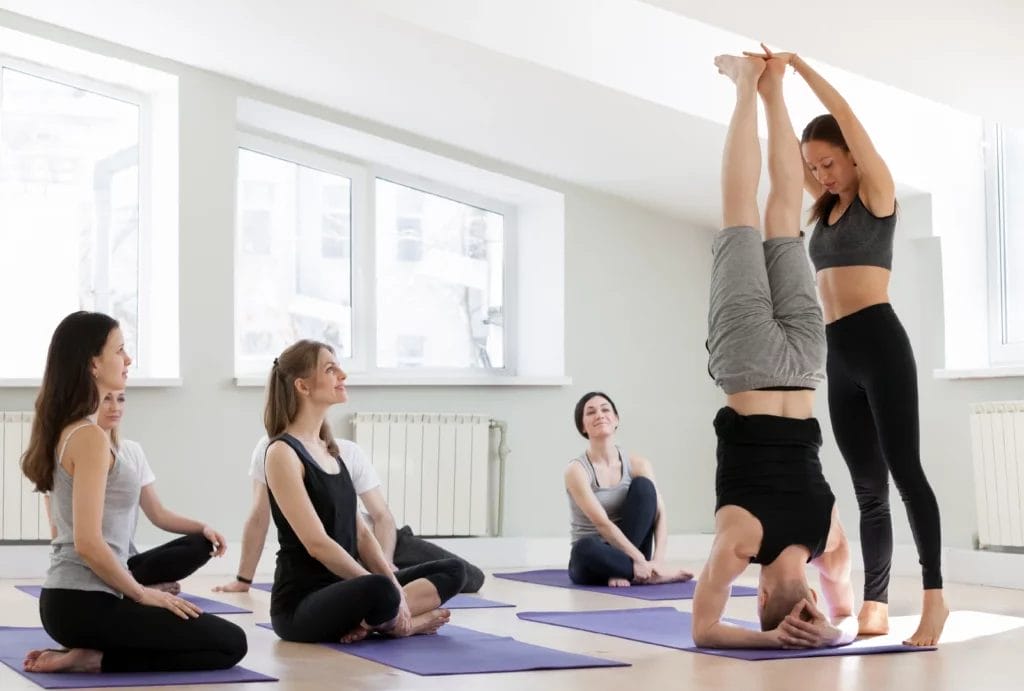
What to Consider When Choosing CYT vs. RYT
- Costs: CYT programs can range widely. The longer/higher-hour programs generally cost more than the 200-hour programs — so take into account your personal budgeting needs.
- Location: Most programs will be hosted at a retreat, in a studio, or online. Not everyone can take time away from work or family to attend a retreat in another city, state, or country, so local or online programs are a great alternative.
- Instructor: You may want to find programs taught by an influential figure or a favorite teacher. This can make the certification process more enjoyable or meaningful for you. Or research reviews to decide if that is someone you’d like to learn from.
- Curriculum: If you have a specific style of yoga you want to pursue, look for programs that include that type. When starting out, though, keep in mind that you may or may not have the ability to focus on one style or another and might need to do a more general training first.
- Time: Keep in mind the time you have to dedicate to class and conduct your research accordingly. There are options to complete these requirements over extended periods of time on an ongoing class basis, or more condensed into a series of workshops or one long, intensive retreat.
- Prior Experience: If you already have a 200 certification, you may be able to find specialty programs to get certified to teach more niche classes, like childrens’ yoga, prenatal yoga, or trauma-informed yoga.
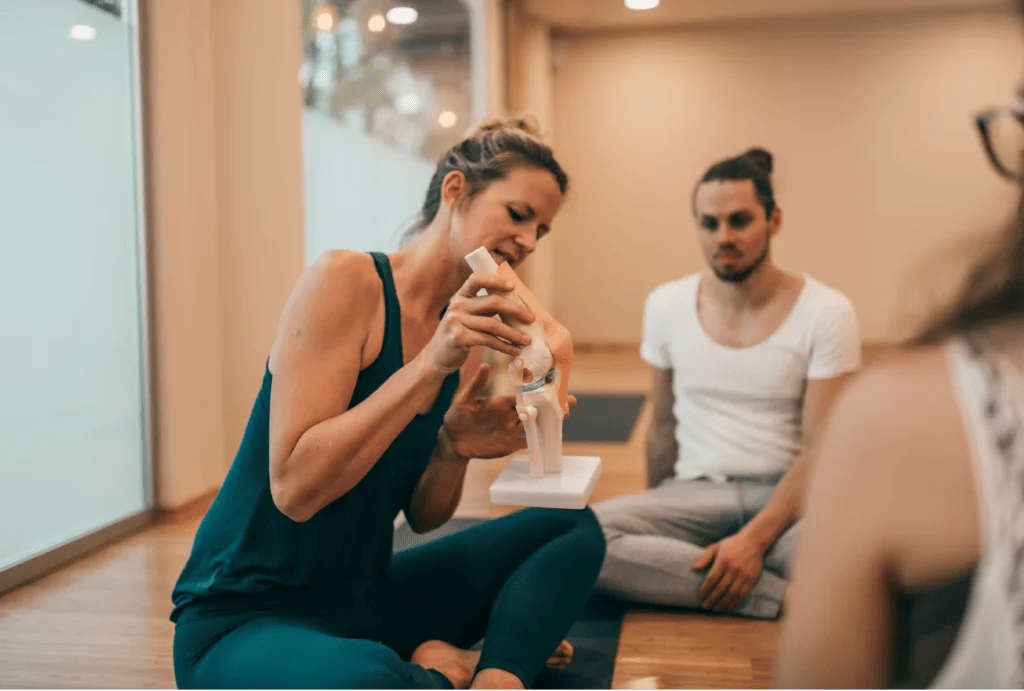
2. Complete Your Practical Hours and Coursework
Once you’ve found a program that works for you, you’ll register and start classes. A 200-hour course may take several months to complete, and a 500-hour certification could take several years. It depends on the format of your program.
Regardless of the program you choose, you’ll likely participate not only in pose and flow classes but more academic-style ones as well. These usually include information on yoga philosophy, meditation, ethics, anatomy, and more.
Most programs also require a set number of teaching hours in order to earn your certificate.
It’s also recommended that you obtain a CPR/AED* certification in addition to your yoga teacher accreditation. Many studios will require you to show proof of CPR certification and yoga teacher insurance to be hired.
*Cardiopulmonary Resuscitation / Automated External Defibrillator
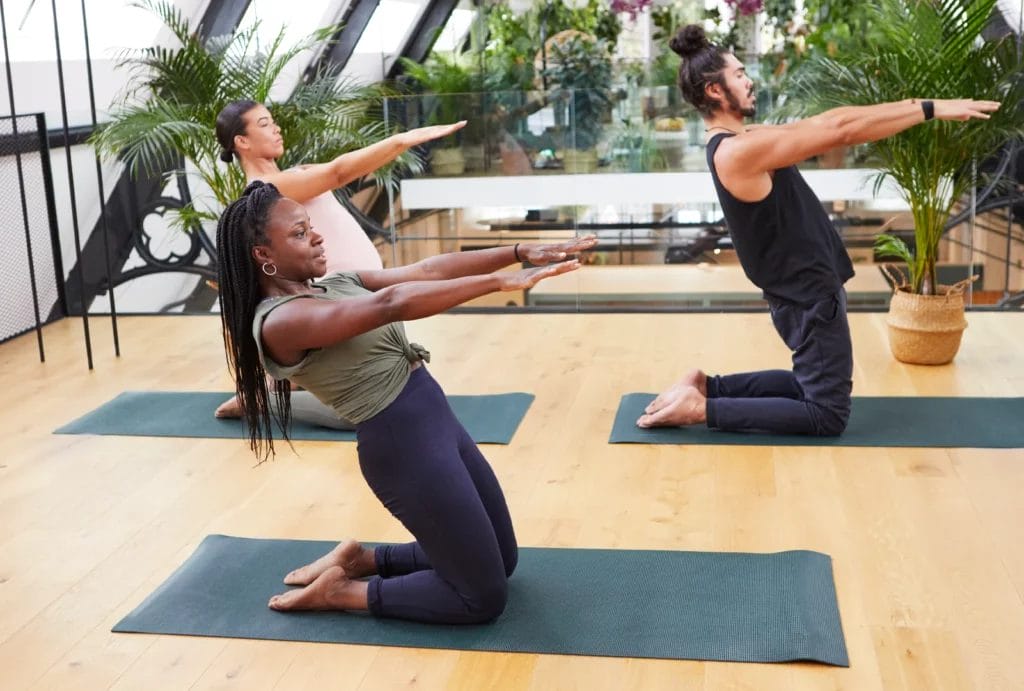
3. Pass Written and Practical Tests
Once your practical and study hours are completed, you will most likely need to do a proctored, graded teaching exam/class. Many programs will also have you take a written exam in order to receive your certificate.
Also, note that you may only apply for a Registered Yoga Teacher certification (RYT) if you complete a training program that is registered with Yoga Alliance.
4. Continue Learning and Practicing
Your yoga instructor certification does not expire.
Your registration with Yoga Alliance does expire.
To maintain your Registered/RYT status, you need to complete 75 hours of continuing education every three years, consisting of:
- 45 hours teaching
- 30 hours of training directly related to one of Yoga Alliance’s four Educational Categories
Even when not required to take continuing education, being a yogi is still a lifelong endeavor. You’ll always continue to learn and grow within your own practice as well as in your classes.

Average Costs to Get Certified as a Yoga Instructor
Program costs can range from $1,000–$7,000 depending on the location, curriculum, hour level, and instructor.
It is not uncommon to see in-person yoga teacher trainings listed for:
- 200-hour: $1,000–$3,000
- 300-hour: $1,000–$5,000
- 500-hour: $1,500–$5,000+
The higher price tags usually come with the in-depth, international retreats, the 500-hour programs, and/or the “celebrity” trainers.
Online and hybrid yoga instructor training can be listed anywhere between $200–$3,000+ depending on the program.
The cost of instructor training can be a significant hurdle! However, many programs will offer payment plans, special discounts, or scholarship assistance.
If you’re already a certified personal trainer, your certifying organization may also have established (and discounted!) partnerships or programs for becoming a yoga instructor. These classes will likely count towards your continuing education credits.
Both the International Sports Sciences Association (ISSA) and the American Council on Exercise (ACE) have 200-hour yoga instructor courses that are registered with Yoga Alliance.

Why Certified Yoga Instructors Need Insurance
On top of that no matter how experienced and mindful of an instructor you are, trips, falls, gear breakage, and other accidents common in yoga can still happen. So it really is best practice to insure your practice.
Acquire your yoga instructor insurance online in minutes with Insurance Canopy. Policies start at $15 a month, making it easier and more affordable than ever to get the quality protection and peace of mind you deserve.
FAQs About Yoga Instructor Certifications
Legally, you can teach yoga without a certification. You are unlikely to find employment at a studio or other facility without one, however. Most places require at least a 200-hour certification — otherwise, they may consider you too risky to hire.
In-person yoga classes provide more hands-on training, while online teaching allows for more schedule flexibility, although you may not be able to charge as much for online vs. in-person yoga training. Ultimately it will depend on your teaching style, market, and preferences.
After receiving your certification you can pursue teaching in studios, gyms, community centers, and other facilities that offer fitness and wellness programs.
You can also:
- Work with corporate wellness programs as an instructor or consultant
- Become a mindfulness coach
- Specialize in a niche or unique form of yoga
- Train other aspiring yoga teachers
- Run or teach at retreats
- Open your own studio
- Integrate yoga into your other health and wellness services/career
Help launch your yoga instructor business with these yoga marketing tips.

Chelsea Ramsey | Copywriter
Ohio-based copywriter Chelsea Ramsey leverages her experiences as an American Council on Exercise (ACE) certified personal trainer, a role-playing game writer, and a former auto claims adjuster. She holds a bachelor’s in English from Ohio State University and a TEFL certification from Oxford Seminars. Before working at Veracity, Chelsea wrote for Zulily and trained with clients at her local community center. Fully trained on Insurance Canopy’s coverage, she now writes to assist fitness professionals and entertainers in finding their ideal insurance policies.
Ohio-based copywriter Chelsea Ramsey leverages her experiences as an American Council on Exercise (ACE) certified personal trainer, a role-playing game writer, and a former auto claims adjuster. She holds a bachelor’s in English from Ohio State University and a TEFL certification from Oxford Seminars. Before working at Veracity, Chelsea wrote for Zulily and trained with clients at her local community center. Fully trained on Insurance Canopy’s coverage, she now writes to assist fitness professionals and entertainers in finding their ideal insurance policies.



